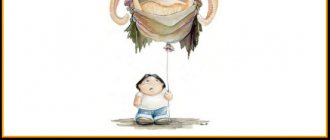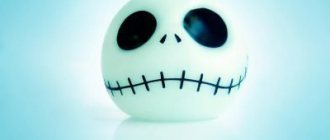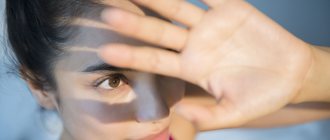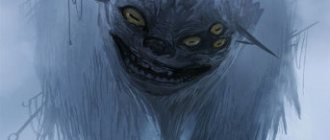Psychologists have studied in detail the impressive number of phobias that haunt modern man. Life makes its own adjustments, adding new fears. Among them there are those that, at first glance, seem quite absurd. Fear of fun is precisely one of these.
Fear of fun is one of the rare phobias that prevent a person from living life to the fullest.
Cherophobia (sherophobia) what is it?
Psychologists consider the fear of happiness and fun to be a justified fear. Despite the fact that it does not directly threaten life, the painful symptom often manifests itself in situations that are psychotraumatic for a person, for example, at crowded holidays, and becomes uncontrollable. What cherophobia is and how it appears has not yet been fully studied, since the phobia is considered to be quite young.
In psychology, the term cherophobia is considered to be derived from the Greek words chero (I rejoice) and phobia (fear). The definition emphasizes that cherophobia is an unusual fear of some individuals that occurs during festive events. Fun is a pleasant state for any person; even the simple thought of upcoming fun causes panic in a cherophobe, making life joyless.
Symptoms of cherophobia
In the initial stages of development, cherophobia rarely appears. During this period, the following signs of a psychological disorder are observed:
- anxiety, uncertainty at entertainment events;
- the desire to find a secluded place with a large crowd of people;
- closedness, isolation in behavior and attitude towards others;
- the desire to avoid emotional and cheerful people.
A characteristic sign of cherophobia is the belief that every good event will be followed by a bad one.
As the disorder progresses, the intensity of the symptoms described increases. Over time, patients begin to experience panic fear around cheerful people.
You can first notice a tendency toward cherophobia based on the patient’s statements. The presence of a disorder is indicated by the patient’s words that he experiences fear of positive emotions, since they can cause trouble or lead to serious consequences.
In advanced cases, pathological fear of fun manifests itself in the form of the following symptoms:
- severe irritation arising from fun and celebrations;
- intolerance to intense noise;
- feeling of nausea as the volume of surrounding sounds increases;
- increased heart rate, anxiety arising from thoughts about the imminent onset of a joyful event;
- dizziness and a feeling of unreality of what is happening when a joyful event occurs;
- a state of “stupor” when the patient learns about a joyful event that happened to others.
People suffering from cherophobia do not know how to behave in company (especially noisy ones).
Patients are unable to show interest in other people. Cherophobia is just the fear of fun. Patients with this disorder know how to rest. However, to do this, cherophobes look for secluded places.
A particular danger for cherophobes is the desire of people to force them to have fun. At this moment, outbursts of aggression and rage at such an attitude are possible.
Thanatophobia (Tantophobia) is the fear of death.
Who is at risk of becoming a cherophobe?
Thanatophobia - what is it, causes of pathological fear
Any person can become a cherophobe and be called sick. Psychologists studied the population of patients and identified risk groups:
- Most often, they are children from families where fathers or mothers themselves experience a similar condition. When raising a child, they unconsciously develop a fearful attitude towards the objects of their own fear. If a family doesn’t like to have fun, then the emotional state of adults can be passed on to the children.
- Psychologists note that sherophobia is a behavior that is similar to the behavior of introverts. Introverted individuals dislike events where large crowds are expected and feel discomfort, especially when surrounded by strangers.
- You can also find cherophobes among extremely emotional and imaginative individuals.
Anyone can become a cherophobe if they are at risk
Symptoms of a phobia
A cherophobe can be recognized by traits similar to those of an introvert: isolation, withdrawal, isolation from the outside world, excessive seriousness. Such a person lives comfortably, immersed in his inner experiences. Answering the question of what cherophobia is, experts emphasize the lack of positivity in the lives of those suffering from this disease. The main problem is that they are afraid to be happy, they constantly think that if bad days come after happiness, then is it worth being happy?
Astheno-depressive syndrome - what is it?
People dependent on a phobia can easily be identified at the holidays that they are forced to attend, for example, matinees in kindergarten, school holidays or professional corporate parties. At these moments, they experience severe anxiety, panic attacks, unjustified excitement, and are looking for a place where they can retire. Unpleasant experiences prompt them to refuse such entertainment, pretending to be sick or simply being late for a festive evening.
For your information. Individuals prone to sherophobia not only do not feel love for fun as an action, but also stop communicating with those who are trying to please and amuse them. Such a person will never go to a birthday party or a youth party, because he sincerely does not understand why have fun, because tomorrow he has to work.
Symptoms
Behavioral
If a sherophobe is invited to a party, this does not make him happy, but causes a lot of anxiety and tension. Pictures immediately flash through his head of various horrors that await him and his loved ones later.
Thoughts about happiness and pleasant events that have happened deprive him of peace, because the premonition that now something bad will definitely happen does not leave him for a minute. And you know, he's waiting for his time.
Not only because thoughts are material, but also because he focuses all his attention on probable failures, as if looking for confirmation of his theory.
The phobe also feels guilty for allowing himself to relax and experience joy. As if he then becomes a “bad” person who committed a crime.
Somatic
Frequent experiences of anxiety and horror have an extremely negative impact on a person’s physical and mental health.
This gradually leads to insomnia, nervous exhaustion, irritability and depression. He may avoid communication so as not to risk his peace of mind, if you can call it that.
At the moment of panic, his breathing constricts, which becomes shallow and frequent, causing hyperventilation of the lungs.
The phobe becomes even more scared, because he thinks that he is about to suffocate and desperately tries to “swallow” air, only worsening the condition.
There may also be pain in the area of the heart, which makes you think about a heart attack. I feel dizzy and very nauseous, even to the point of vomiting.
Sometimes there are stomach problems. The herophobe, panicking, sweats profusely, becomes cowardly and feels either hot or cold. No matter what the weather is like outside or indoors.
Tremors of the limbs are often observed, his voice and even his chin are trembling. He is unable to focus on one thing, nor is he able to think critically or adequately perceive the surrounding reality.
Why does he make wrong decisions that threaten his health and even his life. Let’s say he rushes home in hysterics and panic, not noticing obstacles and crashing into passers-by, stumbles and falls, and runs out onto the road.
Diagnosis of the syndrome
Fear of getting sick - what is it and what is it called?
How sherophobia is diagnosed, what it is and how it manifests itself, according to experts, is not difficult to find out. Signs of such fear are similar to the syndromes of any phobia: panic attacks, systematic avoidance of situations that cause joy, depression, especially on the eve of the holidays.
If it is impossible to avoid a festive event, the cherophobe develops symptoms characteristic of such patients: tremors, sweating and pallor, panic or fainting, tachycardia, diarrhea, hoarseness and similar phenomena.
Sherophobia exhibits all the signs that are characteristic of any phobia.
For your information. This fear does not immediately become clear to others, since sherophobes are not always in a sad or anxious state, characteristic of depression. In this position they find themselves only in front of events that bring a feeling of joy. It seems to such people that if they allow themselves to become happy even for a short time, this will certainly be followed by some sad or tragic event.
Diagnosis of cherophobia
Cherophobia is diagnosed by collecting information about:
- the current condition of the patient;
- presence/absence of concomitant pathologies affecting brain function;
- the presence of negative events in the past that could negatively affect the state of the psyche;
- the nature of the manifestation of the phobia, the causes of exacerbation.
This syndrome is often confused with depression.
However, both conditions develop for different reasons and require different treatment strategies. The diagnosis is made by a psychotherapist or clinical psychologist. Myrmecophobia is the fear of ants.
General characteristics of the disease
When characterizing the disease, the following reactions of people are most often noted:
- They try to avoid participating in entertainment events.
- They do not want to watch comedy films and performances, considering it an unnecessary waste of time.
- They never talk about the good things that have happened in their lives, or devalue them when mentioned.
- They forbid themselves to think about happiness, even remember joyful moments, fearing that something bad will happen.
- They feel guilty when they experience joy, when they realize that they are happy.
- They unknowingly give up everything that could change their life for the better.
What does it represent?
The term itself comes from the word “chairo” - “I rejoice.” That’s why “cherophobia” is read in English, either as cherophobia, or as sherophobia, and sometimes cherophobia.
As you prefer, all the names are correct, the only thing is that the first option is not associated with fun at all. So be careful when sharing it in public.
People with this disorder do not walk around with a constantly sad face, nor do they faint if someone laughs in their presence.
No, they are not at all depressed melancholic people, although there are such people among them. Herophobes simply expect punishment for the joy and pleasure they receive.
It’s as if the Universe is trying to balance the lives of each of us, and gives us different feelings and sensations in equal portions.
Therefore, they can deliberately refuse a happy event, choosing quiet everyday life, just so that they don’t have to pay for it later.
Cause of the syndrome
The causes of this disorder are being studied, but have not yet been fully established. Modern medicine has adopted a conventional point of view, according to which a nervous state can be caused by:
- Fear experienced in childhood during a holiday, for example, about a forgotten text, and caused by ridicule from others.
- In rare cases, the cause may be a joyful event, but associated with severe stress that followed it, for example, during the fun, a tragic accident happened to someone close to you. In this case, a cause-and-effect relationship develops from joy to misfortune in a person’s mind.
- An evil prank during a holiday and the subsequent feeling of shame, fear, and awkwardness cause further rejection of the fun. It’s bad when such events happen to a child, as they leave an imprint for life.
- The fear of being in a funny situation again, when everyone makes fun of the patient’s awkwardness, encourages one to avoid positive emotions and people having fun.
- The causes of cherophobia are often mental disorders and genetic predisposition.
The cause of cherophobia is severe fear during a festive event.
When everything seems clear
Let's start with the simplest case, when a person knows exactly what exactly awaits him on weekends and holidays, and frankly does not want it. The most common situation is a dysfunctional family, from which they escape at work. There are plenty of options. A husband who demands continuous active attention to himself on his only free day. A wife who wants to turn her husband into a teddy bear by her side when she wants to chat with friends. And, of course, equally odious and hateful visits to numerous uninteresting and sometimes problematic relatives. For established citizens of advanced age, sometimes there is an added painful need to attend various public events that have long since become disgusting and have become physically difficult.
However, this is not enough for a full-fledged phobia. The situation described above can irritate, annoy, openly torment, but just not cause that mysterious fear that chills the heart, inherent in a real phobia. Because phobic fear requires an element of the unconscious, the presence of something firmly established in the depths and visible on the surface only in a small part. And this usually requires a repeated traumatic situation in the past.
How to deal with your fear of fun
It is possible to overcome a phobia if you seek help from a psychotherapist. The specialist will conduct a preliminary diagnosis and find the necessary treatment method individually for each patient.
You can also recover from cherophobia on your own if you make a categorical decision to get rid of fear and pull yourself together. The patient needs to realize that a joyful atmosphere must be present in his life. Not every cherophobe decides to take such a step. It will be more useful to seek help from a specialist who will give you the opportunity to work through anxiety and fear and find the cause of your nervous state.
Important! Sherophobia does not pose a threat to the life and health of people, however, like many mental disorders, it requires mandatory monitoring by a specialist.
Psychoanalysis, hypnosis and cognitive behavioral therapy
Before you begin psychocorrection, you need to think about why fear occurs when you see people having fun. Identifying external causes will eliminate internal depression and relieve tension.
In psychotherapy, specialists influence the underlying cause of a phobia using psychoanalysis, hypnosis, and cognitive behavioral therapy. This provides an opportunity to develop the ability to maintain composure in a critical situation and realize that having fun does not cause harm.
Cognitive behavioral therapy helps the patient understand the relationship between the emergence of pathological fear and the onset of cherophobia. Having realized this, the cherophobe works through specific panic attacks using various means. The techniques prescribed in the future are aimed at changing a person’s lifestyle and thinking.
Important! Psychotherapeutic intervention is valuable because the psychotherapist teaches the patient relaxation methods that will help in the future to suppress the next attack.
The main course of psychocorrection is carried out with the help of psychotherapy and trainings. First, a conversation is held with the cherophobe, then an individual plan and treatment method are developed. In the future, up to ten psychotherapeutic sessions are sufficient.
If the case is advanced, it is necessary to use medical hypnosis.
Modern methods of psychotherapy are used to treat cherophobia
Important! Hypnotherapy is used only by licensed physicians, psychologists who can use hypnosis to treat depression, anxiety, phobias and various disorders. In the laws of the Russian Federation there is no separate specialty “hypnotherapist”.
Cognitive behavioral therapy, psychoanalysis, and hypnotic actions have a positive effect on the underlying causes of fear. Thus, the patient gradually develops the ability to control himself in a stressful situation. With constant psychotherapy, herophobes gradually free themselves from phobic addiction.
In modern psychotherapy, drug treatment is not used to treat sherophobia. Only if necessary can sedatives be prescribed to normalize the functioning of the nervous system. Therapy may not be used if the phobia does not affect the quality of life and activity; psychological sessions can also help.
Treatment
Cherophobia is often mistaken for depression and attempts are made to cure it. Naturally, to no avail. Therefore, you should be extremely attentive to your own well-being.
And at the first sign of a phobia, go to a qualified specialist.
Since such disorders usually do not go away on their own, but only become more complicated, gradually developing into more serious forms.
A psychotherapist will help you get rid of attitudes that prevent you from realizing your needs. You will also explore why these negative associations between punishment and happiness arose.
Try to figure out what prompted you to deliberately limit yourself and deprive yourself of pleasures. Work with fears, release accumulated emotions and begin to try to gain your own experience, new, devoid of introjects and fantasies.
The psychiatrist will prescribe the necessary medications to speed up the recovery process. For example, these can be sedatives, tranquilizers, sleeping pills and antidepressants.
Treatment is selected depending on the somatic symptoms that cause inconvenience.
Someone cannot sleep because of nightmares in which he has fun, and then learns about the death of his loved ones as a sign of punishment.
And some are unable to relax even for a minute, being on alert to learn unpleasant news. In general, an integrated approach to treatment will achieve more effective results.











